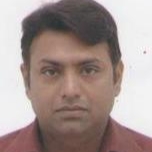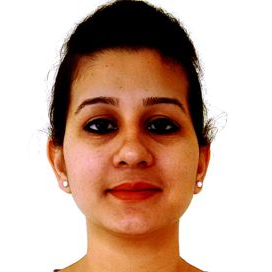International Journal of Intelligent Systems and Applications (IJISA)
IJISA Vol. 8, No. 10, 8 Oct. 2016
Cover page and Table of Contents: PDF (size: 650KB)
PSO-Based NBI Resistant Asynchronous MC-CDMA Multiuser Detector
Full Text (PDF, 650KB), PP.60-67
Views: 0 Downloads: 0
Author(s)
Index Terms
Multi-Carrier Code Division Multiple Access (MC-CDMA), OFDM, Narrowband Interference (NBI), Multiuser Detection (MUD), Multiple Access Interference (MAI), Particle Swarm Optimization (PSO)
Abstract
Nowadays with the increase of demand in multimedia communication, a reliable and error-free wireless communication system is the need of the hour. MC-CDMA is being investigated as a potential radio technology to provide fourth generation (4G) and fifth generation (5G) cellular mobile services. Narrowband interference (NBI) signals corrupts the subcarriers of MC-CDMA system and as a result its performance degrades. All the available NBI elimination methods uses some kind of filters and other circuitry prior to the demodulator (receiver) to filter out NBI. So addition of extra hardware to the system makes the system complex and slow. Moreover CDMA based systems are affected by digital NBI which gets superimposed with wideband spread spectrum signal. Multiuser detection could be an efficient technique to suppress NBI and multiple access interference (MAI). Computational complexity of opti-mum multiuser detector is an impediment in the way of an efficient multiuser detector. In this paper we propose a particle swarm optimization (PSO) based optimum multiuser detector to eliminate NBI. Simulation results show that performance of proposed PSO based multiuser detector is capable of eliminating NBI with much lesser amount of computational complexity.
Cite This Paper
Anmol Kumar, Rajdeep Kaur, "PSO-Based NBI Resistant Asynchronous MC-CDMA Multiuser Detector", International Journal of Intelligent Systems and Applications (IJISA), Vol.8, No.10, pp.60-67, 2016. DOI:10.5815/ijisa.2016.10.07
Reference
[1]N. Yee, J. Linmartz, and G. Fettweis, “MulticarrierCDMA in indoor wireless radio Networks,” 1993, “doi: 10.1007/BF03001330”. Accessed 30 April 2015
[2]S. Hara and R. Prasad, “Overview of multicarrier CDMA,” IEEE Communications Magazine, vol. 35, pp. 126–133, Dec. 1997, “doi: 10.1109/35.642841”.
[3]A. Caldwell and R. Anpalagan, “Meeting mobile’s de-mands with multicarrier systems”, IEEE potentials, vol. 24, no. 5, pp. 27-31, Dec. 2005, “doi: 10.1109/MP.2005.1594005”.
[4]E. A. Sourour and M. Nakagawa, “Performance orthogo-nal multicarrier CDMA in a multipath fading channel,” IEEE transactions on communications, vol. 44, no. 3, pp. 356-367, May. 1996.
[5]R.Liu, E. Chester, and B. Sharif., “Performance of asyn-chronous multicarrier CDMA multiuser receiver over fre-quency selective multipath fading channels”, IEEE Elec-tronics letters, vol. 40, pp. 48-49, Jan 2004.
[6]IIlesanmi B. Oluwafemi and Stanley H. Mneney, “Review of space-time coded orthogonal frequency division multiplexing systems for wireless communication”, IETE Technical Review,Vol. 30, Issue5,pp 417-426, 2013, “doi:10.4103/0256-4602.123126”.
[7]Mustafa Ismael,Muntadher et al. “Radio resource man-agement for green 3GPP long term evolution cellular networks:review and trade-offs”, IETE Technical Re-view,Vol.30,no. 3,pp.257-269,2013.“doi: 10.4103/0256-4602.113526”.
[8]L. B. Milstein, “Interference rejection techniques in spread-spectrum communications”, Proc. IEEE, vol. 76, no. 6, and pp.657-671 “doi:10.1109/5.4455”.
[9]R. L. Pickholtz, L. B. Milstein and D. L. Schilling, “Spread spectrum for mobile communications”, IEEE Transactions on Vehicular technology, vol.40, no. 2,pp. 313-322 1991. “doi:10.1109/25.289412”.
[10]L.B. Milstein, “Interference suppression to aid acquisition in direct sequence spread spectrum communications”, IEEE Transactions on communications, vol. 36, no. 11, pp.1200-1202, 1988.
[11]L.B. Milstein and P.K. Das, “An Analysis of a real time transform domain filtering digital communication system Part 1: Narrowband interference rejection” ,IEEE Trans-actions on Communications, vol. 28, no. 6 ,pp 816-824, 1980.
[12]S. Davidovici and E.G. Kanterakis, “Narrowband inter-ference rejection using real time fourier transforms”, IEEE Transactions on Communications, vol.37, no.7, pp.712-722, 1989, “doi:10.1109/26. 3163”.
[13]J. Ketchumand and J.G. Proakis, “Adaptive Algorithms for estimating and suppressing narrowband interference in PN spread spectrum system”, IEEE Transactions on Communications, vol. 30, pp. 913-924, May 1982.
[14]L. Li and L.B. Milstein, “Rejection of narrowband inter-ference in PN spread spectrum signals using transversal filters”, IEEE Transactions on Communications, vol. 30,pp 925-928,May 1982.
[15]E Masry, “Closed form analytical results of narrowband interference in PN spread spectrum systems part 1: Linear prediction filters”, IEEE Transactions on Communications, vol.32, pp.888-896, Aug.1984. “doi: 10.1109/TCOM.1984.1096164”.
[16]R. IItios and L.B. Milstein, “Performance analysis of narrowband interference rejection techniques in DS spread spectrum systems”, IEEE Transactions on Com-munications, vol., pp 1169-1177, Nov. 1984.
[17]Y.C. Wang and L.B. Milstein, “Rejection of multiple narrowband interference in both bpsk and qpsk DS spread spectrum systems”, IEEE Transactions on Communica-tions, vol. 36, no. 2,pp 195-204, 1988, “doi: 10.1109/26.2750”.
[18]N. Varshney and R.C. Jain, “An adaptive notch filter for narrowband interference removal”, IEEE National Con-ference on Communication, pp. 1-5, 2013.
[19]H. Cheng and S.C. Chan, “Robust channel estimation and multiuser detection for MC-CDMA under narrowband in-terference”, Journal of Signal Processing Systems”, vol. 52, pp. 165-180, 2008.
[20]G.J. Saulneir, “Suppression of narrowband jammers in spread spectrum receiver using transform domain adaptive filtering”, IEEE Journal on Selected Areas in Com-munications, vol. 10, pp. 742-749, 1992.
[21]Madhow and M. Honig, “MMSE interference suppression for CDMA”, IEEE Transactions on Communications, vol. 42, pp. 3178-3188, 1994.
[22]Lee and C. Lee, “Adaptive filters for suppressing irregular hostile jamming in direct sequence spread spectrum systems”, IEEE Military Communication Conference: The promise and reality (MILCOM), pp. 118-122. 1987.
[23]I. Bergel, E. Fishler and H. Messer, “Narrow-band inter-ference mitigation in impluse radio”, IEEE Transactions on Communications, vol. 53, pp. 1278-1282, 2005.
[24]R.Vijayan and H.V. Poor, “Nonlinear techniques for in-terference suppression in spread spectrum systems”, IEEE Transactions on Communications, vol. 38, pp 1060-1065, July 1991.
[25]L. Garth, R. Vijayan and H.V. Poor, “A new approach to interference suppression in spread spectrum systems”, IEEE, Milcom Proceedings, Nov. 1991.
[26]L.A. Rusch and H.V. Poor, “Narrowband interference suppression in CDMA spread spectrum communications”, IEEE Transactions on Communications, vol. 42, no.2, pp.1969-1979,Apr.1994.
[27]F. M. Hsu and A. A. Giordano, “Digital whitening tech-niques for improving spread spectrum communications performance in the presence of narrowband jamming and interference”, IEEE Transactions on Communications, vol. 26, pp. 209–216, Feb. 1978.
[28]B. Widrow et al., “Adaptive noise canceling: Principles and applications”, Proc. IEEE, vol. 63, no. 12, pp. 1692-1716, Dec. 1975.
[29]S. Verdu, Multiuser Detection, Cambridge UK, Cambridge Univ. Press, 1998. ISBN:0521593735
[30]Alexandra Dual-Hallen, Jack Holtzman and Zoran Zvonar, “Multiuser Detection for CDMA systems” IEEE personal communications, 1995.
[31]Zexian Li, Markku J. Juntti and MattiLatva-aho, “Genetic Algorithm based frequency domain multiuser detection for MC-CDMA systems”, IEEE, CWC, 2005.
[32]C. Ergun and K. Hacioglu, "Multiuser detection using a genetic algorithm in CDMA communications systems" Communications, IEEE Transactions on Communications, vol.48, no.8, pp.1374–1383. 2000.
[33]C. Xu, Lie-Liang Yang and L.Hanzo, “Ant colony Based Multiuser Detection for MC-DS-CDMA systems”, IEEE, Vehicular Technology Conference (VTC), 2007,”doi: 10.1109/tvt.2007.905617”.
[34]K. K. Soo, Y.M. Siu, W.S. Chan, L. Yang and R.S. Chen, “Particle-Swarm-Optimization based multiuser detection for CDMA communications”, IEEE Transactions on Ve-hicular Technology, vol.56, no.5, pp. 3006-3013, Sept. 2007.
[35]J. Kennedy and R.C. Eberhart, “Swarm Intelligence [M]”, San Francisco, Morgan Kaufmann, 2001.
[36]J. Kennedy and R. Eberhart, “Particle Swarm Optimiza-tion”, Proceedings of 1995 International Conference on Neural Networks, pp. 1942-1948, 1995.
[37]Kennedy, J.; Eberhart, R.C.; "A discrete binary version of the particle swarm algorithm" 1997 IEEE International Conference on Computational Cybernetics and Simulation, vol. 5, pp. 4104-4108, Oct. 1997 “doi:10.1109/ICSMC.1997.637339”.
[38]Shi, Y., Eberhart R., “A modified particle swarm optimizer” Evolutionary Computation Proceedings, 1998, “doi: 10.1109/ICEC.1998.699146”.
[39]S. Singh and J. Kaur, “Temporal weather prediction using back propagation based Genetic Algorithm technique”, I.J. Intelligent Systems and Applications, vol. 12, pp. 55-61, 2014.
[40]E. Z. Juybari and S. M. Hosseini, “Optimization of mi-crogrid using quantum inspired evolutionary algorithm”, vol. 9, pp. 47-53, 2014.
[41]D. J. Persis and T.P. Robert, “Reliable mobile ad-hoc network routing using firefly algorithm” I.J. Intelligent Systems and Applications, vol.5, pp. 10-18, April 2016.
[42]D.A.A. Ghana Singh, E.J. Leavline, R. Priyanka and P.P. Priya, “Dimensionality reduction using genetic algorithm for improving accuracy in medical diagnosis”, vol.1, pp. 67-73, Jan. 2016.

